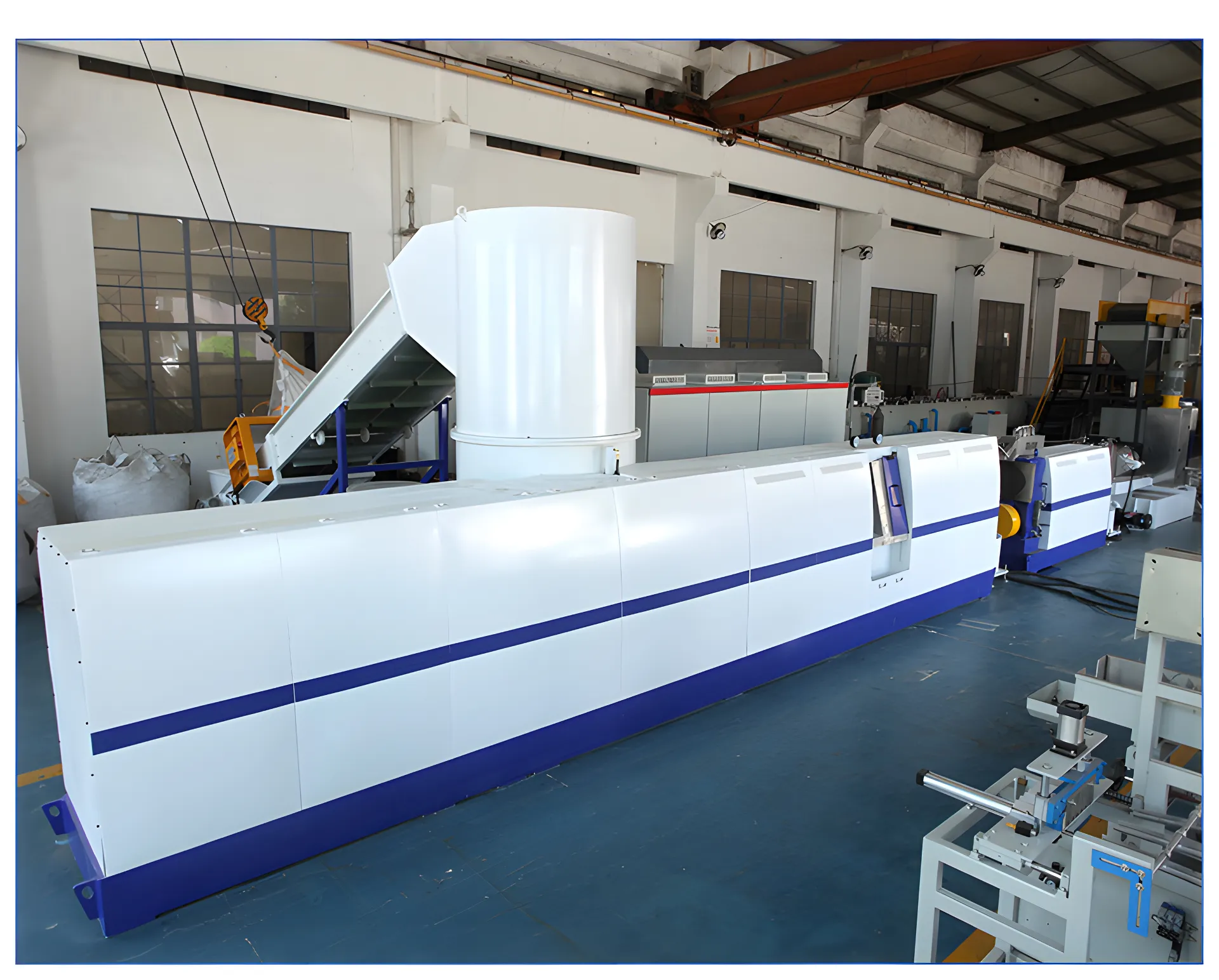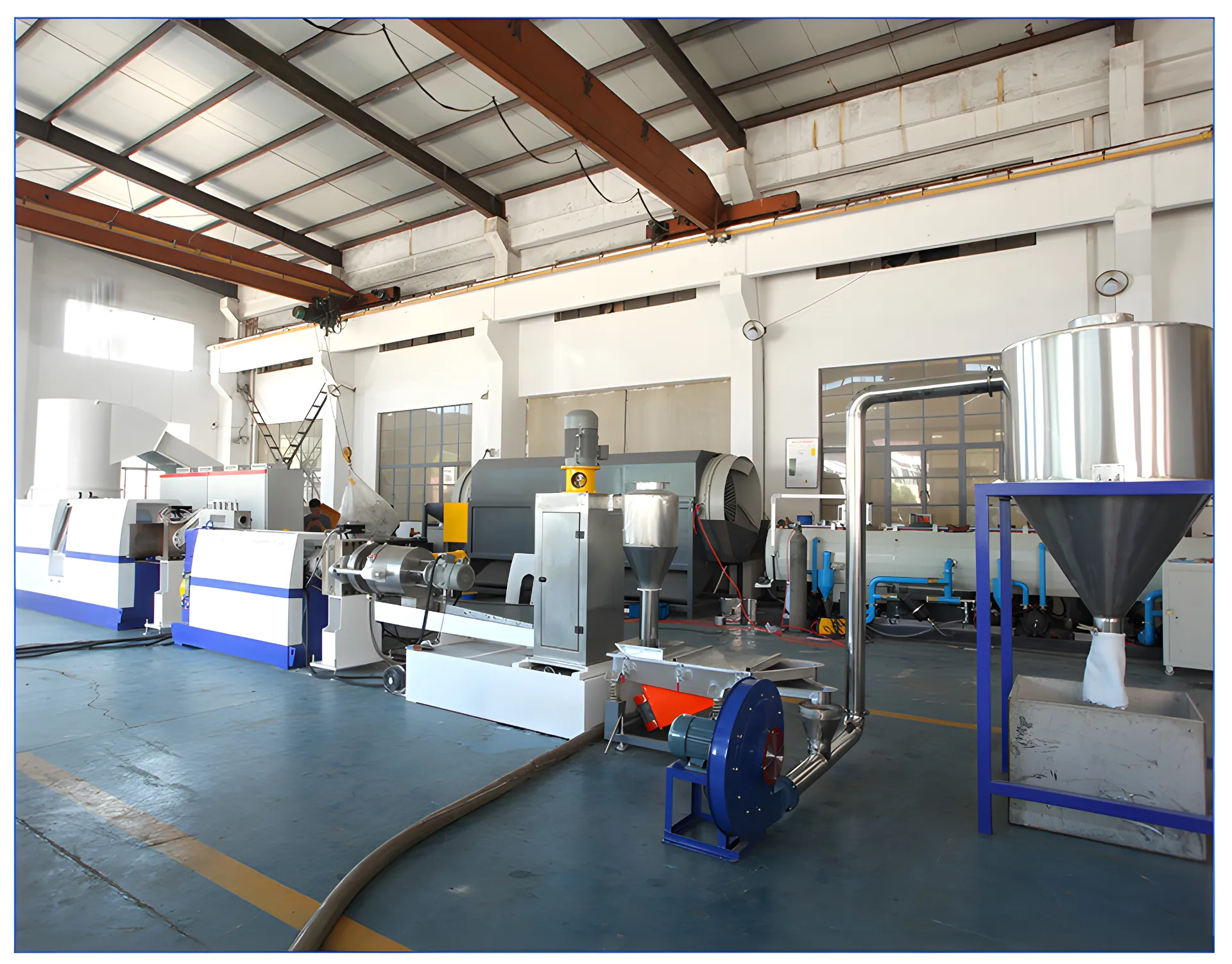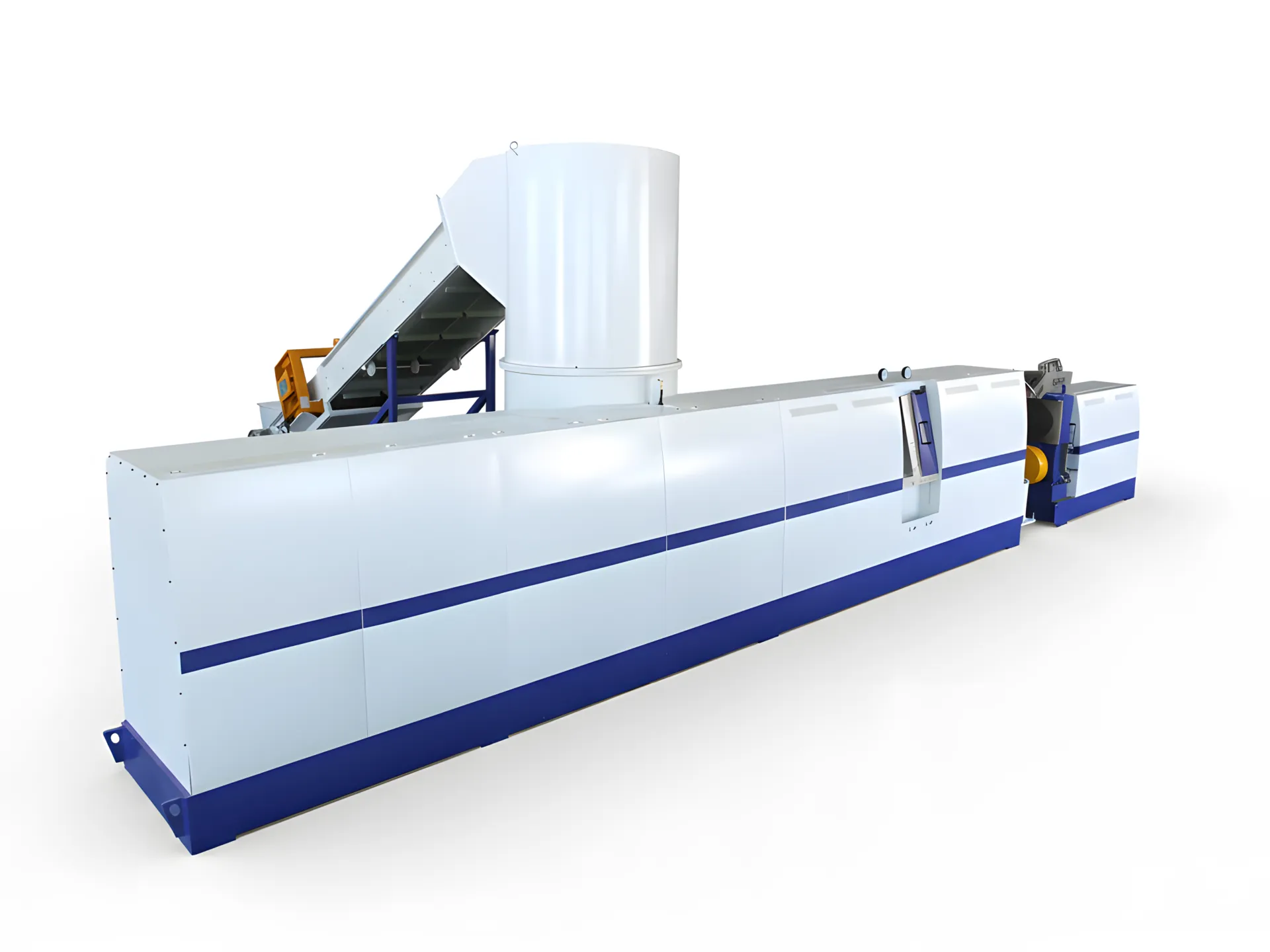EPS Foam Pelletizing Line
Transform bulky Styrofoam waste into valuable, dense plastic pellets. Drastically reduce storage and transport costs while creating a new revenue stream.
Turn Foam Waste Into Profit
Our complete pelletizing line is a highly efficient, automated solution for converting problematic EPS foam into a valuable commodity.
Extreme Volume Reduction
Compacts bulky foam waste by up to 90%, slashing your storage space requirements and transportation fees.
Create a Revenue Stream
The dense, recycled EPS pellets are a valuable commodity that can be sold to manufacturers of new plastic products.
Boost Sustainability
Divert thousands of cubic meters of non-biodegradable foam from landfills, enhancing your company's environmental credentials.
High-Efficiency Output
Designed for continuous, high-speed operation, ensuring maximum productivity and a rapid return on your investment.
The Challenge of EPS Foam Waste
EPS (Styrofoam) is 98% air, making it a logistical and financial nightmare to manage. Our system is the definitive solution.
Problem: Sky-High Costs
Bulky, lightweight foam fills up dumpsters and trucks instantly, leading to exorbitant storage, handling, and disposal costs.
Solution: From Air to Asset
Our line crushes, melts, and reforms the foam into dense pellets, reducing its volume by 90% and turning a costly liability into a valuable asset.
Problem: Environmental Burden
EPS foam is a major contributor to landfill waste and environmental pollution, harming your brand's image and sustainability goals.
The 4-Stage EPS Pelletizing Process
A complete, automated system that transforms bulky foam blocks into uniform, high-quality plastic pellets.
1. Crushing
Large EPS blocks and boxes are fed into a crusher, which breaks them down into small, uniform flakes for easy processing.
2. Melting & Extrusion
The flakes are fed into a specialized extruder. A heated screw melts the plastic and removes the air, forming a continuous stream of molten polymer.
3. Filtration & Cooling
The molten plastic is pushed through a screen changer to remove impurities, then extruded as "spaghetti" strands into a water cooling bath.
4. Pelletizing
The cooled, solid strands are pulled into a pelletizer, where a high-speed cutting rotor instantly chops them into small, uniform pellets.
Machine Showcase




High-Value Applications for Recycled EPS Pellets
The dense, clean pellets produced by our line are a sought-after raw material for manufacturing a wide variety of new products.
Picture Frames & Moldings
A primary market for recycled EPS is the production of decorative picture frames, crown molding, and architectural details.
Construction Materials
Used as an aggregate in lightweight concrete, insulation boards, and other building materials to improve thermal properties.
Consumer Goods
Molded into a variety of everyday products, including office supplies (pen bodies), coat hangers, and other hard plastic items.
Technical Specifications
| Model | Capacity (kg/h) | Crusher Power (kW) | Main Extruder Power (kW) | Total Power (kW) |
|---|---|---|---|---|
| EPS-150 | 120 - 150 | 7.5 | 22 | ~45 |
| EPS-200 | 180 - 220 | 11 | 37 | ~65 |
| EPS-300 | 250 - 300 | 15 | 55 | ~90 |
Frequently Asked Questions
Why is pelletizing better than just compacting the foam?
Compacting (densifying) only reduces the volume. Pelletizing is a complete recycling process that melts, purifies, and reforms the plastic into a uniform, high-density raw material. Pellets are far more valuable and easier for manufacturers to use in their production lines than simple compacted blocks.
Can this line handle wet or dirty EPS foam?
The system works best with relatively clean and dry material. The melting process will burn off small amounts of moisture. However, for heavily contaminated EPS (e.g., fish boxes), an additional washing and drying step is recommended before pelletizing to ensure the highest quality final product.
What is the return on investment for this machine?
The ROI is typically very fast. It is calculated based on two main factors: 1) The significant savings on your current foam waste disposal and transport costs, and 2) The new revenue generated from selling the valuable recycled EPS pellets. Most businesses see a return in under 18-24 months.
Start Profiting From Your Foam Waste
Stop paying to dispose of a valuable resource. Contact us today for a consultation and a custom quote on an EPS pelletizing line that fits your needs.




Comments are closed.